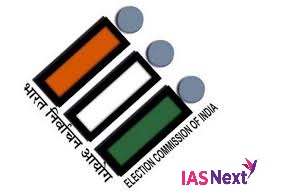CURRENT AFFAIRS
Get the most updated and recent current affair content on Padhaikaro.com
Election Expenditure Limit
- IAS NEXT, Lucknow
- 10, Jan 2022

Reference News:-
The Election Commission of India has raised the expenditure limit for candidates contesting elections.
The following changes have been made:
- The expenditure limit for candidates for Lok Sabha constituencies was increased from Rs 54 lakh-Rs 70 lakh (depending on states) to Rs 70 lakh-Rs 95 lakh.
- The spending limit for Assembly constituencies was hiked from Rs 20 lakh-Rs 28 lakh to Rs 28 lakh- Rs 40 lakh (depending on states).
- The enhanced amount of Rs 40 lakh would apply in Uttar Pradesh, Uttarakhand and Punjab and ₹28 lakh in Goa and Manipur.
Election Expenditure Limit:
Under Section 77 of the Representation of the People Act (RPA), 1951, every candidate shall keep a separate and correct account of all expenditure incurred between the date on which they have been nominated and the date of declaration of the result.
All candidates are required to submit their expenditure statement to the ECI within 30 days of the completion of the elections.
An incorrect account or expenditure beyond the cap can lead to disqualification of the candidate by the ECI for up to three years, under Section 10A of RPA, 1951.
Background:
The last major revision in the election expenditure limit for candidates was carried out in 2014, which was further increased by 10 per cent in 2020.
The same year, ECI also formed to study the cost factors and other related issues, and make suitable recommendations.
Why is there a need for a ceiling on expenditures?
Limits on campaign expenditure are meant to provide a level-playing field for everyone contesting elections. It ensures that a candidate can’t win only because she is rich.
The 255th Report of the Law Commission on electoral reforms argued that unregulated or under-regulated election financing could lead to “lobbying and capture, where a sort of quid pro quo transpires between big donors and political parties/candidates”.
Further reforms:
Cap on party spends:
The EC has asked the government to amend the R P Act and Rule 90 of The Conduct of Elections Rules, 1961, to introduce a ceiling on campaign expenditure by political parties in the Lok Sabha and Assembly polls.
It should be either 50% of or not more than the expenditure ceiling limit provided for the candidate multiplied by the number of candidates of the party contesting the election.
The limit will ensure level playing field for all political parties and curb the menace of unaccounted money in elections.
It will also control the money power used by political parties and their allies.
Supreme Court observations:
Supreme Court of India has said that money is bound to play an important part in the successful pursuit of an election campaign in Kanwar Lal Gupta Vs Amarnath Chawla case.
Voters get influenced by the visibility of a candidate and party and huge election spending thus impacts voter’s choice.
Various Committees and Commissions in this regard:
- Law Commission of India- 170th Report on “Reform of the Electoral Laws” in 1999.
- Election Commission of India- Report in 2004 on “Proposed Electoral Reforms”.
- Goswami Committee on Electoral Reforms in 1990.
- Vohra Committee Report in 1993.
- Indrajeet Gupta Committee on State Funding of Elections in 1998.
- National Commission to Review the Working of the Constitution in 2001.
- Second Administrative Reforms Commission in 2008.
Recently, the Law Commission in its 255th Report has also made several recommendations on electoral reforms under 3 categories namely viz:
- Limits on political contribution and party candidate expenditure.
- Disclosure norms and requirements.
- State funding of elections.
- These recommendations of the Law Commission are under consideration of the government.